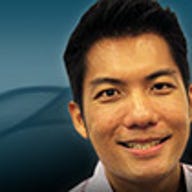ZDNet Cloud TV: Hurdles to overcome (highlights)

Amid the oft-cited benefits of cloud computing, it's important to watch out for the blindspots when considering the extent of the implementation.
Issues to look out for include how the total cost of ownership may not as beneficial as marketing material makes it out to be, according to Drew Graham, CTO of consultancy Evantage Technology. He is also a member of the Asia Cloud Computing Association (ACCA).
"Related to that is the capital and operating expenditure argument, again that may not fall within the parameters that they've been led to understand," Graham pointed out. "The final one is about data sovereignty and nationalistic clouds."
Graham noted there has been quite a buzz over the cost savings from public cloud pay-per-use models, but this does not always pay off better in the long run.
"Very often when we crunch the numbers as to what the cost of running everything on-premise versus on the cloud, on-premise ends up being cheaper over a 3 to 5 year period. Yes, you have to capitalize it, it takes more cash upfront, but when you amortize it over a 3 to 5 year period, you end up saving money," he explained.
He pointed out the best way was often to take a hybrid approach where the fixed workloads are done on-premise.
Another hurdle is in aligning the agenda of all senior management stakeholders, which should lean towards a business conversation as opposed to a technical one.
"We've seen a business conversation where a CEO, he wants to move to the cloud, he wanted to solve a business problem, and we had a technical converation with the CTO and there could be an issue where they already had a lot of hardware, a lot of sunk costs and they haven't got a refresh cycle coming up soon, or they've got legacy systems that will be too difiicult to get rid off," Graham added.
To watch the rest of the interview, watch the full interview.